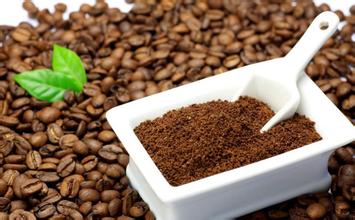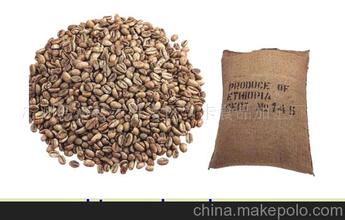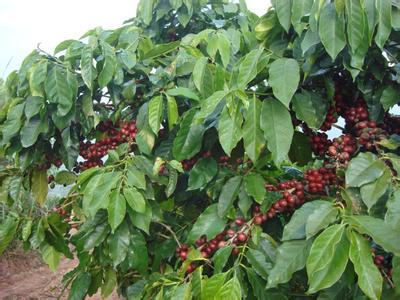Introduction to the requirements of grinding scale in the production method of Yega Xuefei coffee bean siphon pot
Introduction to the requirements of grinding scale in the production method of Yega Xuefei coffee bean siphon pot
Mocha pot: close to the Italian method, direct heating, after all, there is still a big gap between pressure and temperature control. A lower starting point, more than 300 can be bought, and qualified Italian machine 2000 start than save money, if you do well, you can pull flowers.
Hand brewing: the third trend of coffee culture, the necessary equipment includes hand brewing pots, filter cups and filter paper. For coffee lovers, hand brewing can better show the flavor of different places, different estates and different coffee. Boutique coffee will be the main trend of coffee development in the world in the future. The same beans, different people and methods, come out of the taste is very different, relative to the stability of siphon, the hand is changeable. Different beans and different parameters may bring more taste, which is also the pleasure of making coffee by hand. Like Italian style, it needs a certain degree of skill, easy to get started, but it still needs to be studied and improved.
The Italian method has the most oil, in fact, it is mocha, and there is a little bit of French pressing and dripping filtration. there is no inevitable relationship between oil and the delicious degree of coffee. Oil is mainly related to practices and utensils, and it also has something to do with the variety and baking degree of beans.
(1) Caramelization: the sugar in coffee beans is caramelized at about 170-200 ℃, which is exactly the melting point of sucrose (185 ℃) and the temperature of the explosion stage when coffee beans are roasted. The product of caramelization is divided into two parts:
1. The dehydration product of sugar is caramel or sauce.
two。 The pyrolysis products are mainly volatile aldehydes and ketones.
Generally speaking, fire-roasted aroma, caramel and color are produced in the caramelization reaction, as well as other aromatic substances such as maltol, Cyclotene, furan and so on. These compounds can also be found in red wine, fruit juices, cream and other foods. However, if caramel is too much in the baking process is not a good thing, but will cause carbonization, making the coffee dry and choking. If the caramel is not enough, it will make the aroma monotonous and lack of layers.
In fact, the siphon pot does have its unique side. As we all know, the temperature of the coffee brewed in the siphon pot is very high, which can generally reach more than 90 degrees. In such a high temperature environment, the substance extracted from the coffee will be more, and the concentration will be correspondingly higher. Have you found that the coffee brewed in the siphon pot is very black? Therefore, it will feel particularly fragrant and smooth, and the coffee will be relatively bitter, which is suitable for the taste of many veterans.
Will all the coffee be so fragrant and smooth when brewed? In fact, not necessarily, we usually use siphon pot coffee beans are Brazil, Mantenin, Blue Mountain and other moderately roasted coffee beans, and these coffee beans have a very thick oil, more heat-resistant, oil will not be too easy to deteriorate. In other words, these coffees are easier to brew, but if you use a siphon pot to boil Columbia, Yega Chuefei and other coffee beans with less fat and roast shallow coffee beans, it will be difficult to control the heat, and the coffee may be spoiled if you are not careful.
Therefore, some beans are boiled in a siphon pot, and the coffee will be particularly delicious. If you want to know more about coffee beans suitable for siphon pot cooking, you need to have a certain understanding of the ingredients and characteristics of coffee beans.

Important Notice :
前街咖啡 FrontStreet Coffee has moved to new addredd:
FrontStreet Coffee Address: 315,Donghua East Road,GuangZhou
Tel:020 38364473
- Prev

Introduction of Burundian Coffee varieties treated by Grinding Calibration method in the region with characteristic Flavor and Taste
Burundian coffee has special flavor and taste region grinding scale method varieties introduction Burundian coffee has a striking resemblance to its neighbor Rwanda, and coffee produced in these two countries is often confused. Burundian coffee is mainly grown in bourbon, with traditional wet processing of coffee cherries. Its boutique coffee is characterized by elegant sweetness and bright citrus aromas.
- Next

The definition of boutique coffee; the third coffee wave
The definition of boutique coffee; the third Coffee Wave the first Coffee Wave: in the 1930s and 1940s, the US military took coffee as a necessity and brought it to all parts of the world to prevent combat fatigue, and the bitterness of coffee was known by the public. Then the invention and rise of instant coffee. The second Coffee Wave: after World War II, Italian steam pressurized extraction concentrated coffee
Related
- Detailed explanation of Jadeite planting Land in Panamanian Jadeite Manor introduction to the grading system of Jadeite competitive bidding, Red bid, Green bid and Rose Summer
- Story of Coffee planting in Brenka region of Costa Rica Stonehenge Manor anaerobic heavy honey treatment of flavor mouth
- What's on the barrel of Blue Mountain Coffee beans?
- Can American coffee also pull flowers? How to use hot American style to pull out a good-looking pattern?
- Can you make a cold extract with coffee beans? What is the right proportion for cold-extracted coffee formula?
- Indonesian PWN Gold Mandrine Coffee Origin Features Flavor How to Chong? Mandolin coffee is American.
- A brief introduction to the flavor characteristics of Brazilian yellow bourbon coffee beans
- What is the effect of different water quality on the flavor of cold-extracted coffee? What kind of water is best for brewing coffee?
- Why do you think of Rose Summer whenever you mention Panamanian coffee?
- Introduction to the characteristics of authentic blue mountain coffee bean producing areas? What is the CIB Coffee Authority in Jamaica?

